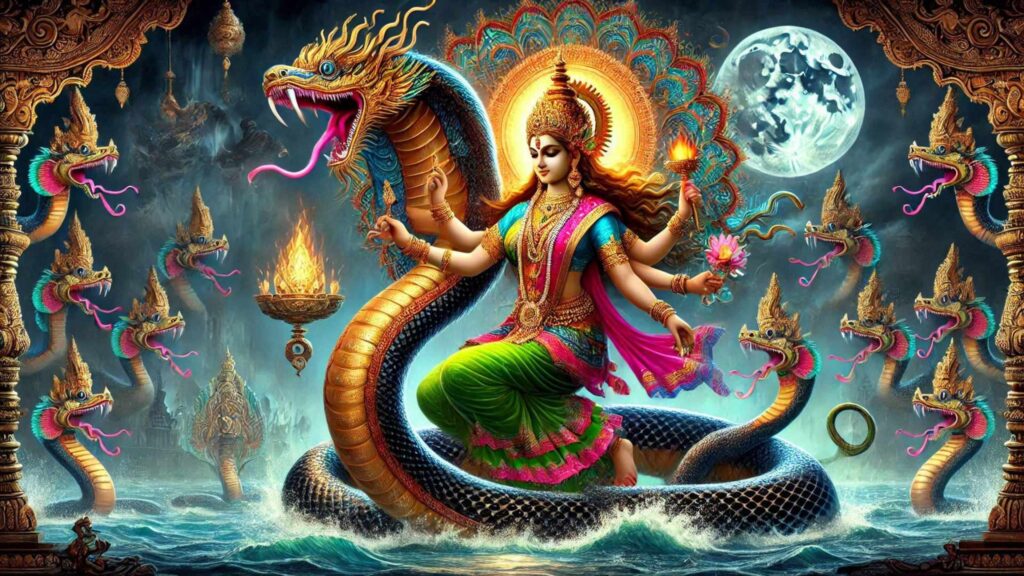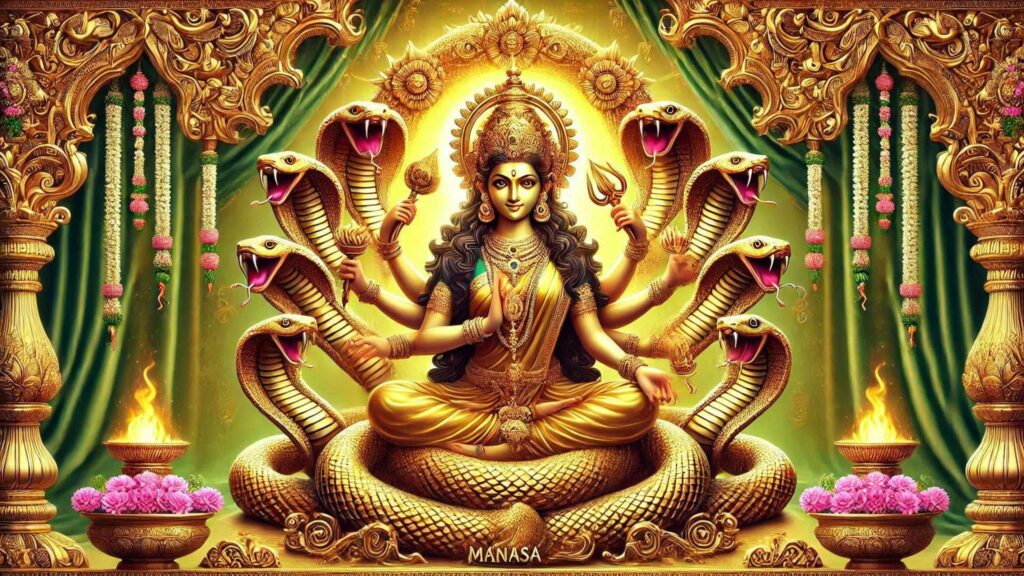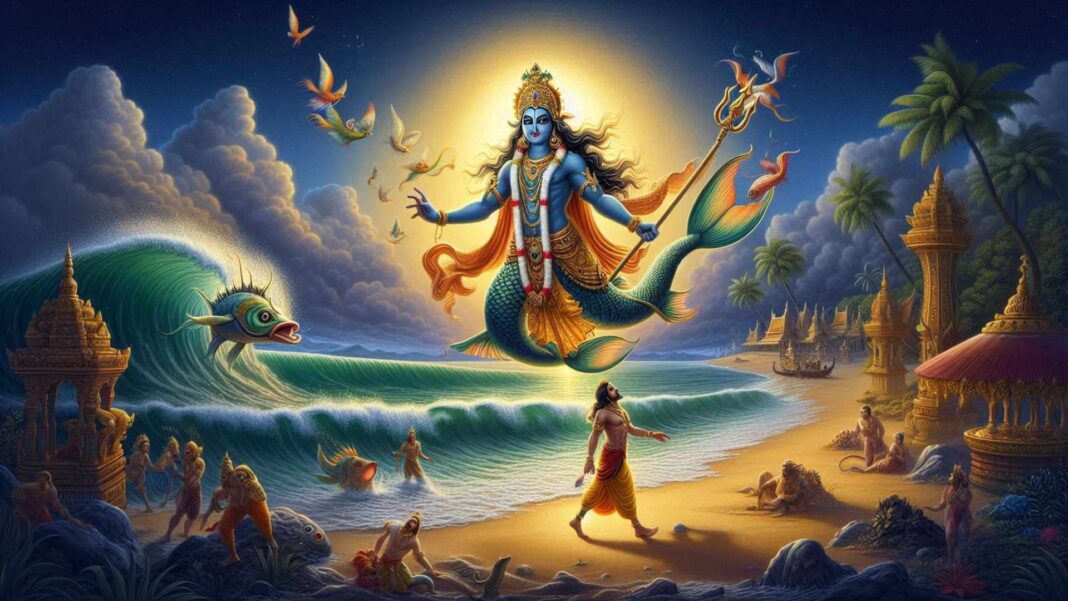Introduction
A Brief Overview of Manasa in Hinduism
Manasa Devi, the serpent goddess, is a revered deity in Hinduism, symbolizing fertility, prosperity, and protection from snake bites and diseases. Known as the daughter of sage Kashyapa and Kadru, she commands reverence in rural India, especially among devotees seeking relief from serpentine dangers and barren lives.
Read More About Deities And Gods
Significance in Daily Hindu Life
Manasa plays an essential role in the lives of Hindus living in areas where snake encounters are frequent. Beyond protection, her blessings are sought for fertility, marital harmony, and general prosperity. Festivals in her honor are significant social and spiritual gatherings in various regions.
Cosmic and Spiritual Importance
Manasa embodies the primordial connection between humans and nature. Her form as a serpent goddess underscores the interconnectedness of life forms and the need for coexistence. Spiritually, she represents hidden wisdom, healing, and the transformative power of devotion.
Names and Etymology

Meaning of Manasa
The name “Manasa” derives from the Sanskrit word manas, meaning “mind.” This reflects her association with inner wisdom, clarity, and spiritual awakening.
Other Names and Their Significance
- Vishahara: The remover of poison, highlighting her role as a protector.
- Nagendra: Queen of serpents, emphasizing her sovereignty over snakes.
- Jaratkaru: Referring to her lineage as the wife of sage Jaratkaru.
- Padmavati: Associated with prosperity and wealth, symbolized by the lotus.
Symbolism and Iconography

Physical Description and Meaning
Manasa is often depicted seated on a lotus or standing under a canopy of serpents. She may hold:
- A pot of nectar: Signifying healing and fertility.
- A snake: Representing her dominion over serpentine creatures.
Symbolism
- The Serpent Canopy: Protection and immortality.
- The Lotus: Purity, fertility, and transcendence.
- Her Calm Demeanor: The pacification of fear and danger.
The Flower Connection
The lotus flower is sacred to Manasa, symbolizing purity arising from the murky waters of worldly challenges.
Colors and Symbols
- Yellow and Green: Fertility and connection to nature.
- Snakes: Strength, rebirth, and protection.
Mythology and Stories

Birth Story
Manasa is the daughter of sage Kashyapa and Kadru, the mother of serpents. Her divine role became prominent when she sought recognition from her half-brother, Vasuki, and stepmother, Jaratkaru, overcoming challenges through devotion and determination.
The Story of Manasa and Spouse
Manasa married sage Jaratkaru. Their union, though initially reluctant, was divinely ordained and produced Astika, a revered sage instrumental in saving the Naga race from annihilation during Janamejaya’s snake sacrifice.
Connection with Other Gods and Goddesses
Manasa is linked to Shiva, who is said to have granted her divine status. She is also connected to Vasuki, the king of serpents, and Parvati, symbolizing familial ties and divine approval.
Role in Epics
While not prominently featured in the Ramayana or Mahabharata, her son Astika’s intervention during the Sarpa Satra (snake sacrifice) of King Janamejaya establishes her indirect role in preserving dharma.
Famous Blessings and Boons
Manasa is believed to bless devotees with:
- Protection from snake bites.
- Fertility and progeny.
- Relief from diseases and calamities.
Spiritual Significance
A Visible Form of God
Manasa’s form symbolizes the harmony between humans and nature, showcasing the divine in every living being.
Representation of Knowledge and Enlightenment
As a deity of wisdom, she guides devotees toward inner clarity and understanding of life’s interconnectedness.
Connection to Yoga and Meditation
Manasa’s association with serpents ties her to Kundalini Shakti, the serpent energy in yoga that represents spiritual awakening and transformation.
Worship and Rituals
Benefits of Worship
- Protection from venomous creatures.
- Fertility and prosperity.
- Healing from ailments and curses.
Daily Worship Practices
- Offering milk, flowers, and turmeric to her idol or a symbolic snake.
- Reciting Manasa Devi Mantras, such as “Om Shree Manasaya Namah”.
Best Times for Worship
- Nag Panchami: A festival dedicated to serpent worship.
- Monsoon months: When snake sightings are frequent.
Important Festivals
- Nag Panchami: Celebrating the bond between humans and snakes.
- Manasa Puja: Observed in Bengal and Assam.
List of Famous Temples
- Manasa Temple (Kamakhya, Assam).
- Manasa Devi Temple (Haridwar, Uttarakhand).
- Manasa Temple (Bashirhat, West Bengal).
Modern Relevance
Scientific Understanding
- Snake worship aligns with ecological balance and respect for biodiversity.
- Milk offerings symbolize gratitude and coexistence rather than literal feeding.
Environmental Consciousness
Manasa worship emphasizes the conservation of serpents, vital for maintaining ecological balance.
Health Benefits and Energy Connection
- Chanting her mantras reduces stress and promotes mental clarity.
- Her connection to Kundalini Shakti aligns with energy healing practices.
Sustainable Living Practices
Manasa’s teachings encourage harmony with nature, promoting sustainable practices and reverence for all creatures.
Cultural Impact
Influence on Indian Art and Architecture
Manasa’s iconography has inspired temple carvings, paintings, and folk art, reflecting her widespread cultural significance.
Presence in Literature and Poetry
The Manasamangal Kavya, a Bengali narrative, highlights her trials, triumphs, and divine grace.
Impact on Daily Customs
Her worship shapes rural customs, particularly in regions dependent on agriculture, where snakes are both revered and feared.
Regional Variations in Worship
- Bengal and Assam: Elaborate pujas and folk songs.
- South India: Worship as part of Naga traditions.
Practical Applications
Morning Prayers and Rituals
Invoke her blessings with morning prayers to foster protection and mental peace.
Dietary Recommendations
Abstinence from non-vegetarian food during her festivals promotes self-purification.
Astrological Significance
Manasa is invoked during unfavorable planetary periods (Sarpa Dosha) to mitigate challenges.
Gemstones and Metals
- Emerald: Enhances mental clarity and protection.
- Silver: Symbolizes purity and harmony.
Conclusion
Summary
Manasa Devi symbolizes the interconnectedness of life, offering protection, prosperity, and spiritual wisdom. Her relevance transcends mythological stories, guiding humanity toward ecological balance and inner harmony.
Universal Message
Manasa Devi’s teachings emphasize coexistence, healing, and the transformative power of devotion, presenting a timeless guide for modern life.
Call to Action
Embrace Manasa’s wisdom and rituals to cultivate a balanced, prosperous, and spiritually fulfilling life.


